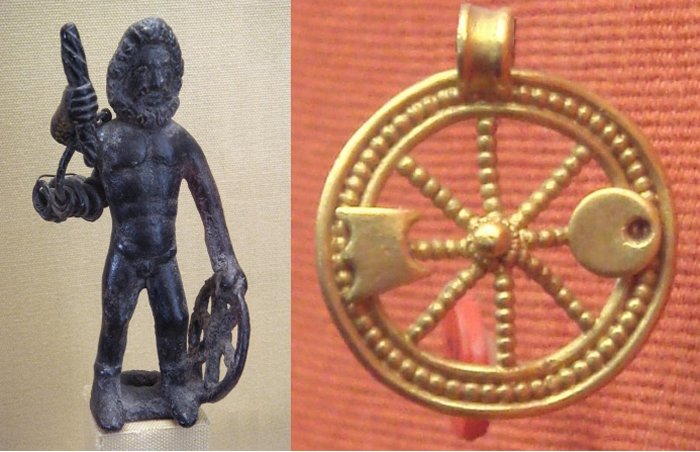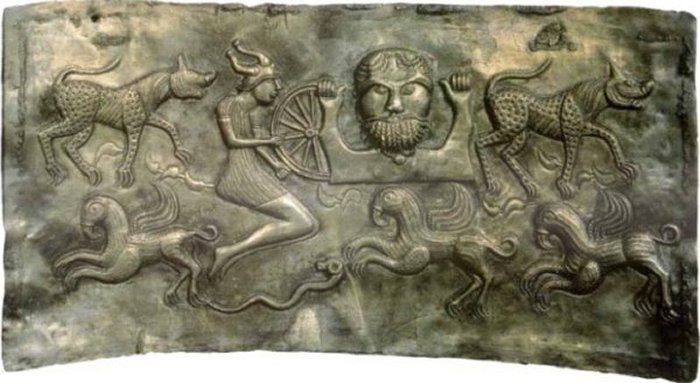Taranis – Celtic God Of Wheel And Thunder Resembled Roman God Jupiter
Ellen Lloyd - AncientPages.com - In Celtic mythology Taranis was the mighty god of thunder. In Welsh and Breton, the word for thunder is taran. Taranis is not as famous as Thor, the Norse god of thunder, Perun, the Slavic god associated with thunder, or Indra, the Vedic god who is frequently depicted holding and using vajra, a terrifying, light-throwing thunderbolt.
Taranis As A Celtic God Of Thunder
Nevertheless, ancient Roman inscriptions reveal that the Celts once worshiped Taranis as a deity with authority over the weather and the sky. He was identified with the ancient Roman god Jupiter, associated with thunder, lightning, and storms. In addition, there is evidence that Taranis was also the Celtic wheel god.
Left: Taranis (Jupiter with wheel and thunderbolt), Le Chatelet, Gourzon, Haute-Marne, France. Credit: Public Domain. Right: Golden Celtic wheel with symbols, Balesme, Haute-Marne. Musée d'Archéologie Nationale. Credit: Public Domain
Archaeological findings have established that Taranis was worshipped not only in Gaul, Britain, and Ireland but also in regions like the Rhineland and the Danube.
It is difficult to determine Taranis's importance, but Lucan, the first Roman poet, considered him one of the three most dominant Celtic deities. Unfortunately, few surviving inscriptions exist, and those that have been found are geographically widespread, making it hard to say how much attention the Celts paid to Taranis.
“At Tours and Orgon (both France) dedications to ‘Thunder’ were probably intended as references to this deity. The same probably applied to dedications to the ‘Thunderer’ at Böckingen and Godramstein (western Germany) and also at Scardona (Croatia).
This last inscription and another from Thauron (France) explicitly equated Taranis with Jupiter.”
“Taranis may also have had connections with the Underworld since a medieval monastic commentator on Lucan (living in Berne, Switzerland) equated Taranis with Dis Pater (or Pluto), the god of the Underworld.” 1
Dangerous Cult Of Taranis
Lucan also explained followers of Taranis belonged to a cruel cult that practiced human sacrifices.
“The human victims were in the first place propitiatory, to appease angry gods, but they were also offered for thanksgiving. Even wives and children were sacrificed before a battle to ensure victory. Prisoners were immolated after a victory in thanksgiving to the gods—Lucan speaks of the cruel sacrifices offered by tribes in Gaul dwelling between the Seine and the Loire to such deities as Teutatis, Esus, and Taranis. Cæsar says that persons in extreme sickness or who are exposed to the perils of war, sacrifice human victims or vow to do so, employing the Druids to carry out the rite.
Gundestrup cauldron, created between 200 BCE and 300 CE, is thought to have a depiction of Taranis on the inner wall of cauldron. Credit: Public Domain.
They believe that unless a life is given for a life the majesty of the immortal gods cannot be appeased. Such sacrifices were made by private individuals or in public ceremonies. He speaks of one public ceremony which for horror cannot be surpassed. Figures of immense size, their limbs made of wicker, were filled with human victims, and set on fire. The victims pleasing to the gods were thieves or other criminals. 2
Taranis was usually depicted as a bearded god with a thunderbolt in one hand and a wheel in the other.
Taranis As A Celtic Wheel God
His connection to the wheel is quite interesting. The wheel was an important Celtic symbol often depicted on coins. Still, it can also be found on the beautiful Gundestrup Cauldron, a magnificent vessel made from richly decorated plates of silver assembled into a single cauldron.
Archaeologists have unearthed thousands of votive wheels called Rouelles in sanctuaries in Belgic Gaul. These ancient artifacts dating from 50 B.C. to 50 C.E. are believed to correspond to the Taranis cult.
One of the reasons why so many votive wheels have been found in sanctuaries is that a wheel could represent a full chariot. As the chariot was the vehicle of the celestial gods, it was also associated with the Sun and Moon.
Votive wheels called Rouelles. Credit: Public Domain
As previously mentioned, many “depictions of the God-of-the-Wheel resemble Jupiter and they bear his attributes of eagle and thunderbolt. The wheel as a symbol is certainly Celtic rather than Roman. Therefore, in both a literary source and in iconography, a Celtic divinity has been “equated” with a classical one. If the Celtic version of Jupiter was named Taranis and if a Celtic attribute appears on archaeological depictions of the Roman god, it seems not unreasonable to suppose that these archaeological representations must symbolize a Celto-Roman deity who was very possibly referred to by his worshippers as “Jupiter-Taranis’”. 3
Very few inscriptions of Taranis have been unearthed, making him a rather obscure god, but it doesn’t necessarily mean he was insignificant to our ancestors.
Updated on March 27, 2024
Written by Ellen Lloyd – AncientPages.com
Copyright © AncientPages.com All rights reserved. This material may not be published, broadcast, rewritten or redistributed in whole or part without the express written permission of AncientPages.com
Expand for references- Whittock, Martyn - A Brief Guide to Celtic Myths and Legends
- A. MacCulloch - The Celtic and Scandinavian Religions
- Green, Miranda. "The Worship of the Romano-Celtic Wheel-God in Britain Seen in Relation to Gaulish Evidence." Latomus38, no. 2 (1979): 345-67.
More From Ancient Pages
-
 Oldest-Known Grinding Tool Used 350,000 Years Ago Was Found In Tabun Cave, Israel
Archaeology | Jan 4, 2021
Oldest-Known Grinding Tool Used 350,000 Years Ago Was Found In Tabun Cave, Israel
Archaeology | Jan 4, 2021 -
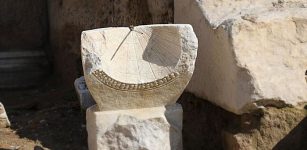 2,000-Year-Old Sundial Discovered In Ancient City Of Laodicea, Turkey
Archaeology | Mar 25, 2020
2,000-Year-Old Sundial Discovered In Ancient City Of Laodicea, Turkey
Archaeology | Mar 25, 2020 -
 Unknown Inscription Accidentally Found In South Tower Of 13th Century Cēsis Castle In Latvia
Archaeology | Aug 18, 2020
Unknown Inscription Accidentally Found In South Tower Of 13th Century Cēsis Castle In Latvia
Archaeology | Aug 18, 2020 -
 Tides And Hurricane Activity Impacted The Maya Civilization – What Can This Tell About Modern Climate Change?
Archaeology | Aug 18, 2021
Tides And Hurricane Activity Impacted The Maya Civilization – What Can This Tell About Modern Climate Change?
Archaeology | Aug 18, 2021 -
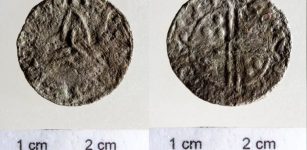 Surprising Discovery Of Ancient Silver Coin Depicting Viking King Harald Hardrada In Hungary
Archaeology | Jun 20, 2022
Surprising Discovery Of Ancient Silver Coin Depicting Viking King Harald Hardrada In Hungary
Archaeology | Jun 20, 2022 -
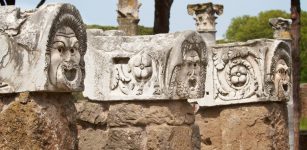 Ostia Antica – Unique Ancient Harbor City In The Suburbs Of Rome
Civilizations | Nov 29, 2018
Ostia Antica – Unique Ancient Harbor City In The Suburbs Of Rome
Civilizations | Nov 29, 2018 -
 Mysterious 11,000 – Year-Old Tower Of Jericho: Was World’s First Skycraper A Symbol Of Power Or An Ancient Time-Keeping Device?
Civilizations | Aug 11, 2021
Mysterious 11,000 – Year-Old Tower Of Jericho: Was World’s First Skycraper A Symbol Of Power Or An Ancient Time-Keeping Device?
Civilizations | Aug 11, 2021 -
 Early Harappan Cultures Can Solve Mysteries Of Several Lost Cities Of Indus Valley Civilization
Artifacts | May 30, 2019
Early Harappan Cultures Can Solve Mysteries Of Several Lost Cities Of Indus Valley Civilization
Artifacts | May 30, 2019 -
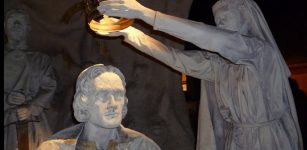 On This Day In History: First War Of Scottish Independence: Battle of Bannockburn Begins – On June 23, 1314
News | Jun 23, 2016
On This Day In History: First War Of Scottish Independence: Battle of Bannockburn Begins – On June 23, 1314
News | Jun 23, 2016 -
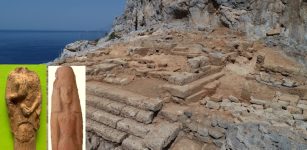 Secrets Of The Ancient Temple Of Dimitra At The Acropolis Of Falasarna Revealed By Archaeologists
Archaeology | Nov 19, 2022
Secrets Of The Ancient Temple Of Dimitra At The Acropolis Of Falasarna Revealed By Archaeologists
Archaeology | Nov 19, 2022 -
 Atacama Desert Reveals More Ancient Secrets
Archaeology | May 8, 2018
Atacama Desert Reveals More Ancient Secrets
Archaeology | May 8, 2018 -
 The Iceni’s Queen Boudicca Who Revolted Against Roman Rule
Featured Stories | Apr 3, 2023
The Iceni’s Queen Boudicca Who Revolted Against Roman Rule
Featured Stories | Apr 3, 2023 -
 Peru’s Wari Culture And Their Ancient ‘Amunas’ Will Help Peru’s Water
Ancient Technology | Apr 13, 2015
Peru’s Wari Culture And Their Ancient ‘Amunas’ Will Help Peru’s Water
Ancient Technology | Apr 13, 2015 -
 Nail Polish Was Used In 3,000 B.C. – Color Of Fingernails Indicated Social Status In Ancient China And Egypt
Ancient History Facts | Jan 11, 2018
Nail Polish Was Used In 3,000 B.C. – Color Of Fingernails Indicated Social Status In Ancient China And Egypt
Ancient History Facts | Jan 11, 2018 -
 Hesperides – Greek Nymphs Who Guarded Fabled Garden With Divine Apples Of Immortality
Featured Stories | Jun 4, 2020
Hesperides – Greek Nymphs Who Guarded Fabled Garden With Divine Apples Of Immortality
Featured Stories | Jun 4, 2020 -
 Sinister Manchac Swamp And The Chilling Curse Of Julia Brown
Featured Stories | Aug 25, 2021
Sinister Manchac Swamp And The Chilling Curse Of Julia Brown
Featured Stories | Aug 25, 2021 -
 Tomb Of A 1,000-Year-Old Sican Surgeon Wearing A Golden Mask Discovered In Peru
Archaeology | Mar 30, 2022
Tomb Of A 1,000-Year-Old Sican Surgeon Wearing A Golden Mask Discovered In Peru
Archaeology | Mar 30, 2022 -
 Secrets Of Cheops’ Pyramid: Does The Newly Found Chamber Contain An Iron Throne?
Archaeology | Jan 13, 2018
Secrets Of Cheops’ Pyramid: Does The Newly Found Chamber Contain An Iron Throne?
Archaeology | Jan 13, 2018 -
 Sacred Artifact With Mystical Powers – The Discovery – Part 2
Ancient Mysteries | Apr 26, 2019
Sacred Artifact With Mystical Powers – The Discovery – Part 2
Ancient Mysteries | Apr 26, 2019 -
 Idiots Were Not Allowed To Vote In Ancient Athens
Ancient History Facts | May 30, 2016
Idiots Were Not Allowed To Vote In Ancient Athens
Ancient History Facts | May 30, 2016

